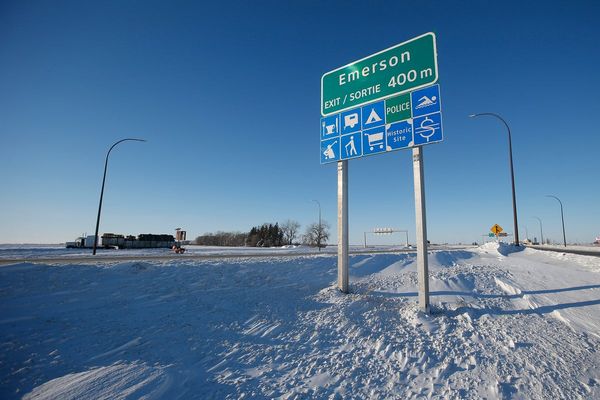The Welsh national anthem — Hen Wlad Fy Nhadau — will be belted out loud and proud at home and in Qatar when Rob Page's Wales football team make their first appearance at a World Cup in 64 years.
Gareth Bale will lead out his team-mates at the Ahmad Bin Ali Stadium ahead of their opening fixture against USA, and they will sing Hen Wlad Fy Nhadau with gusto, as they always do. Follow live Wales v USA updates here.
There will only be a few thousand Welsh fans in the crowd in Doha but we are sure to hear the Red Wall give it their all, too.
Hen Wlad Fy Nhadau, which translats to Land of my Fathers in English, actually has three verses, although you won't hear verses two and three very often, with only the first commonly sung at sporting fixtures. Here is a guide:
GRAB YOUR COPY: Get your brilliant 48-page Wales at the World Cup preview special
Guide to singing Hen Wlad Fy Nhadau, the national anthem of Wales
We have included the lyrics as they are written and sung in Welsh, as well as phonetically along with the meaning in English.
Verse 1
Mae hen wlad fy nhadau yn annwyl i mi,
Gwlad beirdd a chantorion, enwogion o fri;
Ei gwrol ryfelwyr, gwladgarwyr tra mad,
Dros ryddid collasant eu gwaed.
Chorus
Gwlad, gwlad, pleidiol wyf i'm gwlad.
Tra môr yn fur i'r bur hoff bau,
O bydded i'r heniaith barhau.
Verse 2
Hen Gymru fynyddig, paradwys y bardd,
Pob dyffryn, pob clogwyn, i'm golwg sydd hardd;
Trwy deimlad gwladgarol, mor swynol yw si
Ei nentydd, afonydd, i mi.
(Chorus)
Verse 3
Os treisiodd y gelyn fy ngwlad tan ei droed,
Mae hen iaith y Cymry mor fyw ag erioed,
Ni luddiwyd yr awen gan erchyll law brad,
Na thelyn berseiniol fy ngwlad.
(Chorus)
Welsh national anthem translated into English
Verse 1
This land of my fathers is dear to me
Land of poets and singers, and people of stature
Her brave warriors, fine patriots
Shed their blood for freedom
Chorus:
Land! Land! I am true to my land!
As long as the sea serves as a wall
For this pure, dear land
May the language endure for ever.
Verse 2
Old land of the mountains, paradise of the poets,
Every valley, every cliff a beauty guards;
Through love of my country, enchanting voices will be
Her streams and rivers to me.
(Chorus)
Verse 3
Though the enemy have trampled my country underfoot,
The old language of the Welsh knows no retreat,
The spirit is not hindered by the treacherous hand
Nor silenced the sweet harp of my land.
(Chorus)
The words to the Welsh national anthem spelt phonetically
Verse 1
My hehn oo-lad vurr n'had-die un ann-wil ee mee
Goo-lard bay-rdd* ah chann-tor-yon**
Enn-wog-yon o vree
Ay goo-rol ruv-el-wirr
Chorus
Goo-lard gar-wirr trah mard
Dross rudd*-id cor-llar-sant ay goo-eyed***
Goo-lard! Goo-lard!
Ply-deeol weave eem goo-lard
Trah morh un beerh, eer beerh horff bye
O budd*-ed eer hen ee-eye-th barr hye.
*There are two "th" sounds in Welsh as there are in English."Th" in Welsh is pronounced as in English "think" or "fourth". "Dd" is pronounced as in "this" or "that".
** "ch" is pronounced as in "loch" or "Bach"
*** "ll" is an aspirated L. Form your lips and tongue to pronounce L, then blow air gently around the sides of the tongue. The nearest you can get to this sound in English is to pronounce it as an L with a Th in front of it.
The history of the Welsh national anthem
The Welsh national anthem is a collaboration between harpist James James - who wrote the melody, known as Glan Rhondda - and his father Evan James, who wrote the lyrics. Usually dated to January 1856, it was written in Pontypridd, where the family lived. A memorial to the pair was unveiled in the town in July 1930.
It was performed for the first time in the vestry of Capel Tabor in Maesteg in either January or February 1856, by a singer called Elizabeth John from Pontypridd.
But it was thanks to the National Eisteddfod in Chester in 1866 that it became the national anthem. It was sung with such passion it was immediately adopted as the anthem. A visitor to that Eisteddfod wrote: "When I see the enthusiasm which these Eisteddfods [sic] awaken in your whole people I am filled with admiration."
The National Library of Wales records that its popularity spread after the Llangollen Eisteddfod in 1858 and was included in many collections of Welsh melodies as it gradually assumed its place in Welsh life.
READ MORE:







